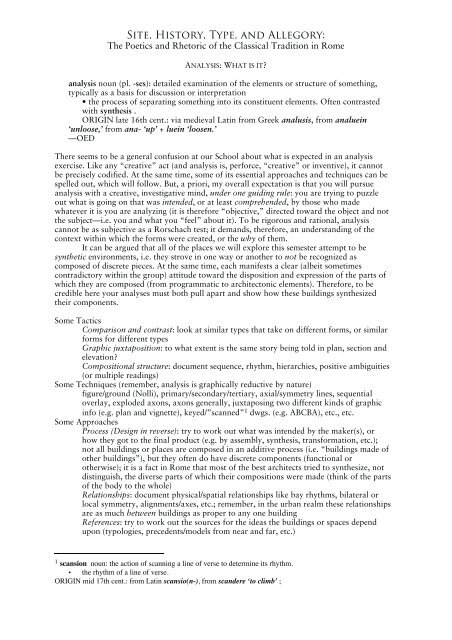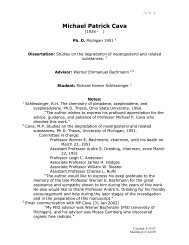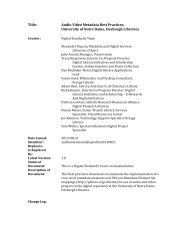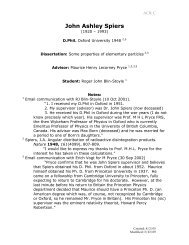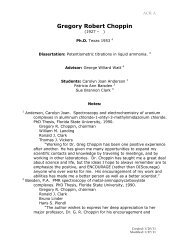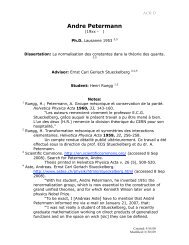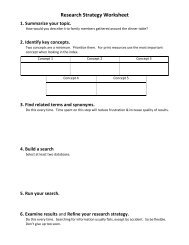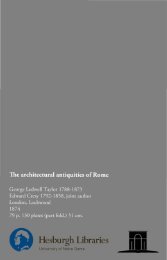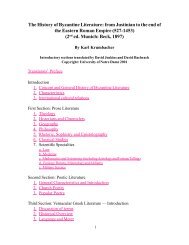ARCH 84312
ARCH 84312
ARCH 84312
Create successful ePaper yourself
Turn your PDF publications into a flip-book with our unique Google optimized e-Paper software.
Site, History, Type, and Allegory:<br />
The Poetics and Rhetoric of the Classical Tradition in Rome<br />
ANALYSIS: WHAT IS IT<br />
analysis noun (pl. -ses): detailed examination of the elements or structure of something,<br />
typically as a basis for discussion or interpretation<br />
• the process of separating something into its constituent elements. Often contrasted<br />
with synthesis .<br />
ORIGIN late 16th cent.: via medieval Latin from Greek analusis, from analuein<br />
‘unloose,’ from ana- ‘up’ + luein ‘loosen.’<br />
—OED<br />
There seems to be a general confusion at our School about what is expected in an analysis<br />
exercise. Like any “creative” act (and analysis is, perforce, “creative” or inventive), it cannot<br />
be precisely codified. At the same time, some of its essential approaches and techniques can be<br />
spelled out, which will follow. But, a priori, my overall expectation is that you will pursue<br />
analysis with a creative, investigative mind, under one guiding rule: you are trying to puzzle<br />
out what is going on that was intended, or at least comprehended, by those who made<br />
whatever it is you are analyzing (it is therefore “objective,” directed toward the object and not<br />
the subject—i.e. you and what you “feel” about it). To be rigorous and rational, analysis<br />
cannot be as subjective as a Rorschach test; it demands, therefore, an understanding of the<br />
context within which the forms were created, or the why of them.<br />
It can be argued that all of the places we will explore this semester attempt to be<br />
synthetic environments, i.e. they strove in one way or another to not be recognized as<br />
composed of discrete pieces. At the same time, each manifests a clear (albeit sometimes<br />
contradictory within the group) attitude toward the disposition and expression of the parts of<br />
which they are composed (from programmatic to architectonic elements). Therefore, to be<br />
credible here your analyses must both pull apart and show how these buildings synthesized<br />
their components.<br />
Some Tactics<br />
Comparison and contrast: look at similar types that take on different forms, or similar<br />
forms for different types<br />
Graphic juxtaposition: to what extent is the same story being told in plan, section and<br />
elevation<br />
Compositional structure: document sequence, rhythm, hierarchies, positive ambiguities<br />
(or multiple readings)<br />
Some Techniques (remember, analysis is graphically reductive by nature)<br />
figure/ground (Nolli), primary/secondary/tertiary, axial/symmetry lines, sequential<br />
overlay, exploded axons, axons generally, juxtaposing two different kinds of graphic<br />
info (e.g. plan and vignette), keyed/”scanned” 1 dwgs. (e.g. ABCBA), etc., etc.<br />
Some Approaches<br />
Process (Design in reverse): try to work out what was intended by the maker(s), or<br />
how they got to the final product (e.g. by assembly, synthesis, transformation, etc.);<br />
not all buildings or places are composed in an additive process (i.e. “buildings made of<br />
other buildings”), but they often do have discrete components (functional or<br />
otherwise); it is a fact in Rome that most of the best architects tried to synthesize, not<br />
distinguish, the diverse parts of which their compositions were made (think of the parts<br />
of the body to the whole)<br />
Relationships: document physical/spatial relationships like bay rhythms, bilateral or<br />
local symmetry, alignments/axes, etc.; remember, in the urban realm these relationships<br />
are as much between buildings as proper to any one building<br />
References: try to work out the sources for the ideas the buildings or spaces depend<br />
upon (typologies, precedents/models from near and far, etc.)<br />
1 scansion noun: the action of scanning a line of verse to determine its rhythm.<br />
• the rhythm of a line of verse.<br />
ORIGIN mid 17th cent.: from Latin scansio(n-), from scandere ‘to climb’ ;


